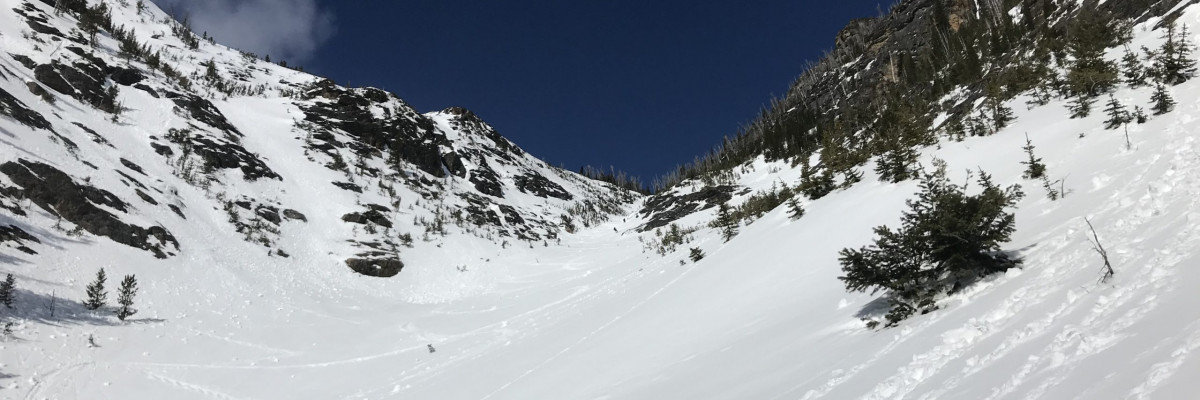The avalanche danger is low this morning and will increase to moderate this afternoon in the west central Montana backcountry. Warming temperatures will increase the avalanche danger.
Good morning, this is Travis Craft with the West Central Montana avalanche advisory for February 27, 2020. Today’s advisory is sponsored by Gull boats and R.V. This advisory does not apply to operating ski areas, expires at midnight tonight, and is the sole responsibility of the U.S. Forest Service.
Weather and Snowpack
Mountain temperatures range from 17 F to 28 F in the region. In the Bitterroot, winds are 9 mph with gusts of 14 out of the SW. In the northern part of the advisory area, winds are 17 mph and gusting 20 mph out of the W. Overnight a trace to 2 inches of new snow.
Today, temperatures will rise above freezing in the mountains. Winds will be light with gusts to 30 mph. These conditions will create wet avalanche problems today. Pay attention to changing snow conditions.
The primary concern today is loose wet releases with warming temperatures. When you start to see rollerballs, it is time to go to shadier aspects. If the snow surface starts to feel punchy and wet it is time to head home.
The second concern is cornice fall. Cornices are enormous right now. Warming temperatures will weaken these giants. Give these beasts a wide berth because they break farther back than anticipated.
Persistent slabs are a concern in the southern Bitterroot. Depth hoar at the bottom of the snowpack can not be trusted. Choose a shallow spot to dig. If you find weak sugary snow at the bottom of your pit, choose a different slope where this structure is not present.
In the Rattlesnake and Seeley Lake areas, wind slabs are an avalanche problem. Leeward slopes were loaded yesterday and were sensitive to human triggers (video). Watch for blowing snow and rounded, textured, drifts. Shooting cracks are a sign of unstable wind slabs.
Bottom Line
Changing weather equals changing avalanche conditions. Warming temperatures throughout the day will increase the likelihood of wet avalanche activity. Dig a pit before committing to any steep slope. Choose a shallow spot to see if you have weak sugary snow at the bottom of the snowpack if you do choose another slope. Travel one at a time in avalanche terrain, carry a beacon, shovel, and probe, and stay alert for signs of instability. Look for red flags. Give cornices a wide berth.
Education
Your observations are extremely helpful! If you get out, please take a minute to fill out the observation form on our website (missoulaavalanche.org), or shoot us a quick email at [email protected].
We offer a variety of avalanche courses throughout the winter. Go to our course offerings page on our website. Check out the list and get yourself enrolled in one of our many courses this winter!
Ski and ride safe.














